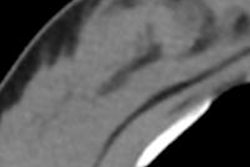Tuesday, December 3 | 10:50 a.m.-11:00 a.m. | VSBR31-12 | Arie Crown Theater
In this Tuesday morning scientific session, researchers from the University of Pittsburgh will present findings from a study that compared lesion visibility and diagnostic accuracy using MRI, tomosynthesis, conebeam CT (CBCT), and full-field digital mammography (FFDM).Dr. Denise Chough and colleagues included 178 lesions in 151 women who had been imaged between April 2009 and June 2011 by all four modalities prior to biopsy. Ninety-seven CBCT exams did not have contrast and 81 included contrast.
Seven radiologists evaluated the performance of each technology, recording lesion visibility in each mode. Of the 178 lesions, 100 were benign and 78 were malignant. Average lesion size was 19.7 mm.
Regarding visualization, the researchers determined the following:
- MRI was better than CBCT but not tomosynthesis.
- FFDM and tomosynthesis were not significantly different.
- Tomosynthesis was better than CBCT.
Using contrast bolstered CBCT's accuracy and visibility, but further improvements would be necessary to use it as an alternative to MRI, FFDM, or tomosynthesis, according to Clough's group. For masses, breast MRI had the highest accuracy and visibility, but tomosynthesis was comparable and could be a viable alternative for evaluating breast masses, they concluded.




















